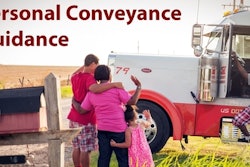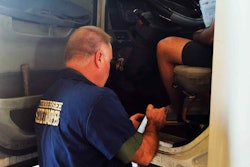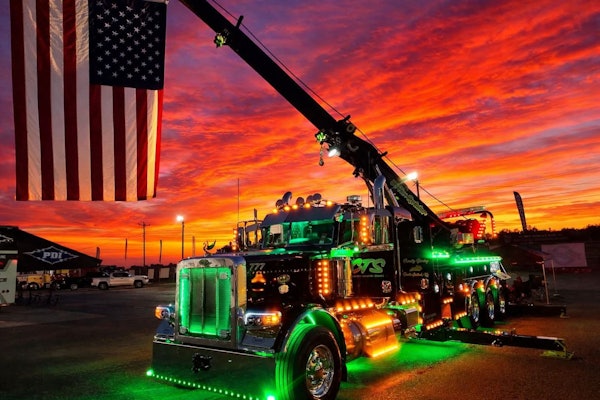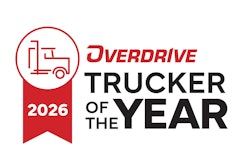Federal Motor Carrier Safety Administration Enforcement and Compliance Director Joe DeLorenzo shared an interesting statistic during a call with media Thursday last week after the FMCSA announced the changes to the ag-hours-exemption and personal-conveyance guidance. If you missed that news, it’s likely most significant to you for the personal conveyance changes. FMCSA for the first time got explicit as it relates to personal conveyance use when woken up by law enforcement and forced to move or, of course, traveling to a safe parking area from a shipper/receiver where you can’t stay. Read more about it, and access detailed guidance documents, via this link:
The interesting factoid DeLorenzo shared was intended I suppose as evidence that the agency’s electronic logging device mandate is having its effect in the hours violation numbers in aggregate the nation over. As he put it out, “What we’re starting to see,” looking back to “about a year ago – hours of service violations are [now] about half of what they were back then.”
We’ve just made our annual calendar-year update for the years-long CSA’s Data Trail series. Breaking out hours violation totals in the aggregate simply by violation count, you can see the overall numbers declining somewhat steadily since 2014.
 Percentage numbers highlighted for 2015-2017 in the graph indicate the percentage fall in total violations from the preceding year. All told, over the entire four-year period, hours violations have fallen almost 21 percent as ELDs have been taken up by more and more carriers. The mandate final rule, regular readers will recall, was introduced early in the first year of the shown period.
Percentage numbers highlighted for 2015-2017 in the graph indicate the percentage fall in total violations from the preceding year. All told, over the entire four-year period, hours violations have fallen almost 21 percent as ELDs have been taken up by more and more carriers. The mandate final rule, regular readers will recall, was introduced early in the first year of the shown period.If DeLorenzo’s “half as many” contention is anywhere near accurate, we’ll end this year with 200,000-plus fewer violation headaches for drivers and carriers than last year, at least in the hours department. Keep in mind the ongoing fall in hours of service violations is in spite of, the last two full calendar years, an increasing incidence of inspections nationally after overall numbers had remained flat to falling a bit for the previous several years.

Some of the decline, as readers have suggested before, is in the wave-through effect of an electronic log, which officers rightly or not seem to default to trusting more than paper, which as owner-op Tom Werner’s case illustrated can work to the detriment of drivers in some cases.
We’ve only gotten the first part of the planned analysis of hours violations this year, however. Keep tuned for more in-depth of just what kinds of violations have declined, and whether that includes most every category.
For now, though, I wanted to be sure to address a couple queries related to the personal conveyance guidance specifically. One in particular is regarding the outlook for fleets who’ve had longstanding internal policies around personal-conveyance usage.
For fleets using ELDs, personal conveyance mode is enabled by the back-end administrator’s account — when selected by the driver, the log defaults to an off-duty status when the vehicle is in motion. Some ELDs will no doubt enable custom-set parameters for drivers’ usage of the PC mode, given fleet-specific limitations.
For most of you, independent owner-ops with authority act as both back-end administrator and driver, often with separate account logins, depending on the ELD system.
Many fleets’ policies toward personal conveyance specify mileage or time limitations they won’t allow drivers to contravene or face some sort of internal reprimand. Those such policies, DeLorenzo noted near the top of the media briefing, will remain the viable option of a fleet. “The carrier does have the right to put their own limits on it, or not put limits on it,” he said. Notably, FMCSA declined to specify a mileage limitation for personal conveyance use, preferring to leave it open to interpretation for individual cases.
In the view of former owner-op and compliance consultant Rich Wilson, with the exception perhaps of removing the requirement for the vehicle to be “unladen” to use personal conveyance, FMCSA really didn’t change much at all, just provided more detailed examples to solve “a bunch of stupid arguments from truck stop lawyers.”
As noted in my prior reporting, several scenarios were explicitly detailed, however, for the first time in formal guidance.
One that wasn’t specifically called out was noted by well-known hauler Jeff Clark in Facebook queries under a share of the Thursday story: “How does this work if you stop at a truck stop while laden and there are no spots?”
Given the agency didn’t specifically spell out this scenario, I’m somewhat inclined to agree with Michael FitzSimmons, also commenting under the Facebook post, when he suggests “FMCSA may be of the ‘plan your trip better’ thinking in this particular case.”
At once, DeLorenzo did leave the door open for interpretation of the guidance that could encompass parking-search situations beyond just movement from a shipper/receiver as OK for personal conveyance. As I wrote Thursday: “DeLorenzo emphasized a key point that might apply more broadly to other scenarios where personal conveyance is utilized for the primary purpose of getting ‘to your safe place to rest. It’s all about why you’re making that particular movement,’ in the end.”
DeLorenzo has stressed a hope that inspectors will give drivers the benefit of the doubt in such scenarios in past, that “hope for leniency” we’ve brought up more than once where there’s clearly no pattern of violations. (The hope, though, isn’t one that’s always something to hang your hat on, as it were.)
Clark offered this counterexample: “They aren’t worried about the one-off [violation]. I had a DOT inspection a couple of years ago when I was on an ELD — emailed my logs to the officer. Went into the truck stop for a coffee exchange. As I was entering the building I remembered that I had a 14-hour violation the week before. Accident in a construction zone. Officer questioned me about it and I told him what happened. He was fine with that and gave me a clean inspection. We talked a bit afterward; he was an avid bicyclist and I showed him the rack that I built. He then told me, ‘About the accident. Just so you know, we can check that.'”
Is enforcement ready for personal conveyance guidance changes?
In response to a query during the call Thursday, DeLorenzo also noted that work has been ongoing with state law enforcement partners to school them on the clarifications guidance is making in specific. Would they be ready for the changes this week during Roadcheck? “To the extent these issues are raised during Roadcheck,” DeLorenzo said, “we feel sure everybody has what they need to do things the right way.”
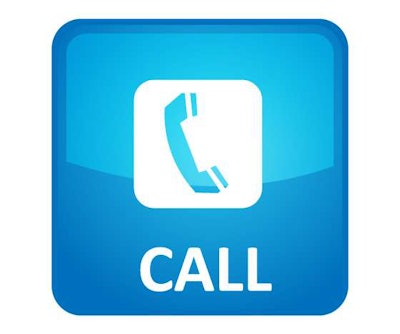 Anybody seeing evidence of Roadcheck getting under way early (or right on time, depending on when you’re reading this)? If you’re reading on a smartphone, tap the image to call and paint the scene for us in a a message on our podcast line with your story. If you’re on a desktop, call 530-408-6423. Make sure to tell us your name and state of residence.
Anybody seeing evidence of Roadcheck getting under way early (or right on time, depending on when you’re reading this)? If you’re reading on a smartphone, tap the image to call and paint the scene for us in a a message on our podcast line with your story. If you’re on a desktop, call 530-408-6423. Make sure to tell us your name and state of residence.He emphasized the “two-way conversation [that] needs to happen at the roadside,” furthermore, and in the event of a communication breakdown (I know, I know), the DataQs system is there for carriers and drivers to make challenges. “First off, make sure the discussion happens at the roadside,” he said. “Whenever there’s a violation that occurs you don’t agree with – there’s an opportunity to challenge it. Take advantage of the DataQs process and let it work from there.”

